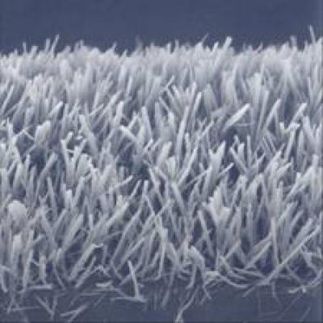Electrostatic surface cleaning
Advertisement
The smallest particles often make a huge difference. If they accumulate on the surface of a product during manufacturing, the quality of the goods may be impaired. A new method removes even the smallest particles safely and effectively.
It’s often the little things that count in industrial manufacturing processes. Particles less than half the diameter of a hair in size can significantly impair quality in production. For example, there should be no particles larger than five micrometers on the packaging film of food and medicines, as these could contaminate the contents. Tiny particles also cause problems in the printing industry, as they reduce the quality of the print if they remain on the surface of the paper. And fine particles on electrical components can cause operational failures. Manufacturers usually resort to a type of vacuum cleaner to remove the dust – it blows air on the contaminated surface, then sucks this in again, together with the undesired particles. However, this method does not effectively remove particles smaller than 20 micrometers, as the electrostatic force causes the majority of them to remain on the surface.
Researchers at the Fraunhofer Institute for Interfacial Engineering and Biotechnology IGB in Stuttgart have developed a system which also removes these fine dust particles effectively from the product surfaces. Colleagues from NITO A/S in Denmark, Ziegener + Frick GmbH in Ellhofen and the Danish Innovation Institute were involved in the development process. “The system guarantees the quality of the product and improves the working environment of employees, as it reliably collects the harmful particles, preventing them from going into the air and then into the lungs of employees,“ says Sukhanes Laopeamthong, a researcher at the IGB.
The researchers charge the dust particles with positive ions. A negatively charged electrode attracts the positively charged dust particles, the resulting force lifting the dust particles easily from the surface of the product. A controlled air current carries them to the dust collector. Prior to the construction of the test equipment, the researchers have already resolved a few questions using special simulation software. What electrical field strength is required to lift the dust particles? What are the required characteristics of the air current transporting the particles? The test equipment removes on average 85 percent of dust particles smaller than 15 micrometers and more than 95 percent of dust particles bigger than 15 micrometers. The scientists expect the system to be operational in industry in approximately two years.
Organizations
Other news from the department science

Get the chemical industry in your inbox
By submitting this form you agree that LUMITOS AG will send you the newsletter(s) selected above by email. Your data will not be passed on to third parties. Your data will be stored and processed in accordance with our data protection regulations. LUMITOS may contact you by email for the purpose of advertising or market and opinion surveys. You can revoke your consent at any time without giving reasons to LUMITOS AG, Ernst-Augustin-Str. 2, 12489 Berlin, Germany or by e-mail at revoke@lumitos.com with effect for the future. In addition, each email contains a link to unsubscribe from the corresponding newsletter.




























































